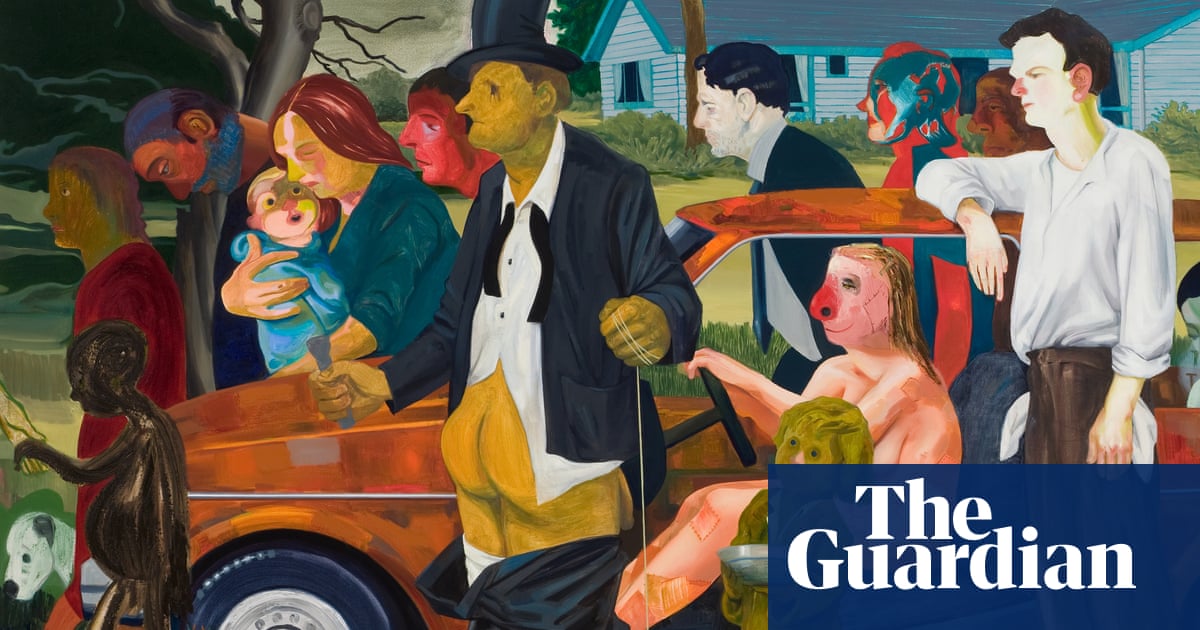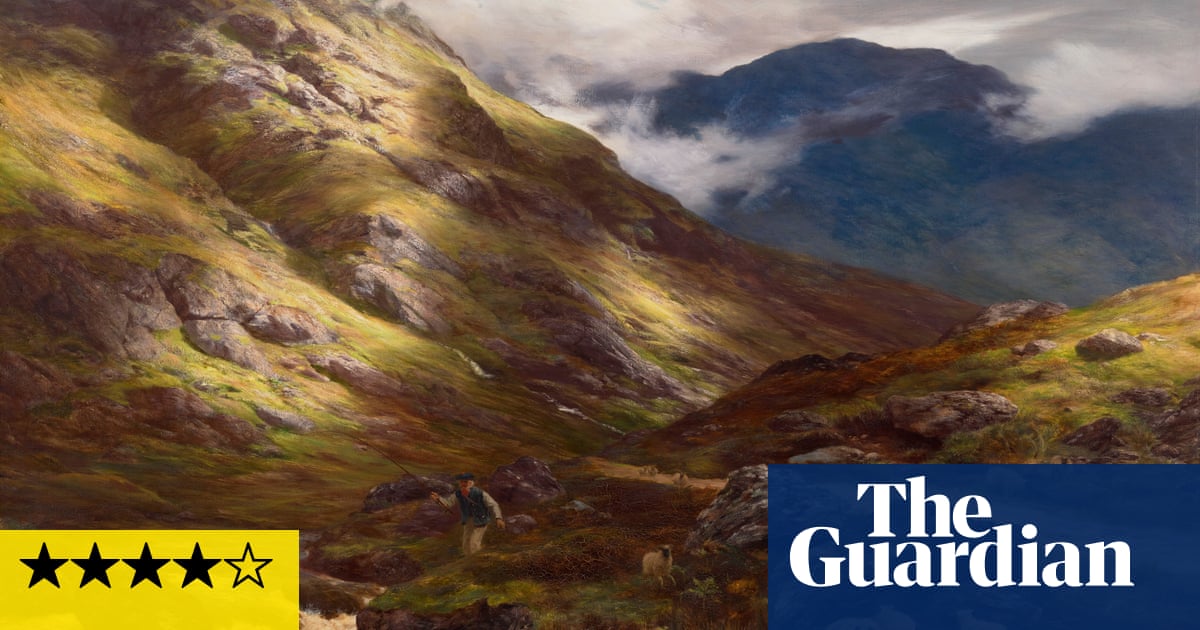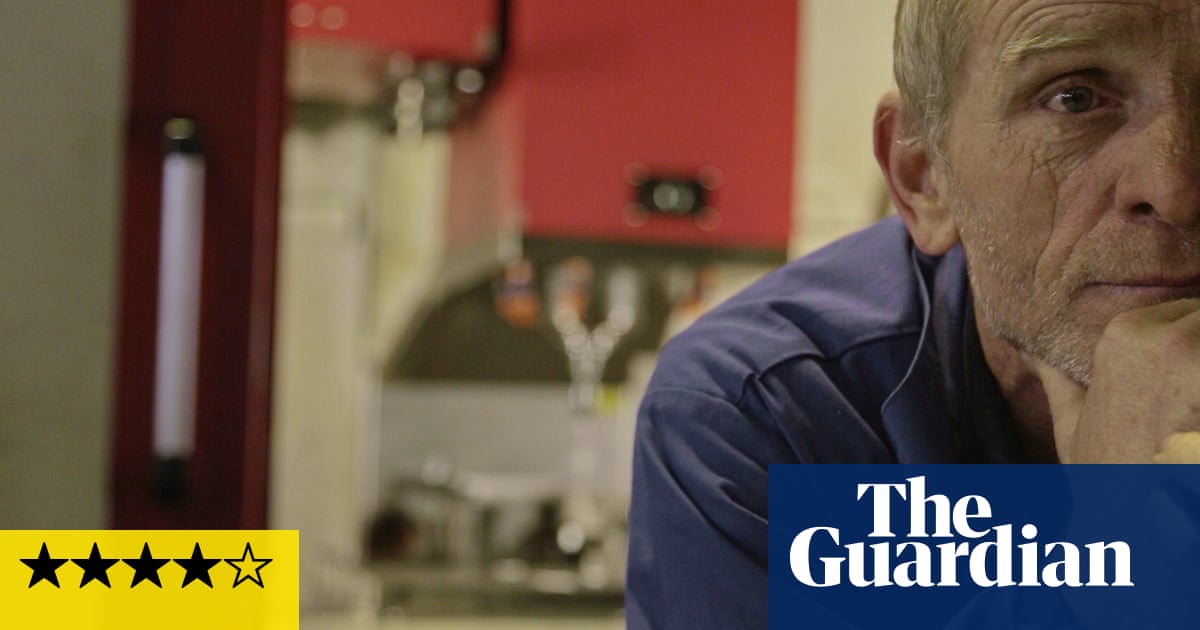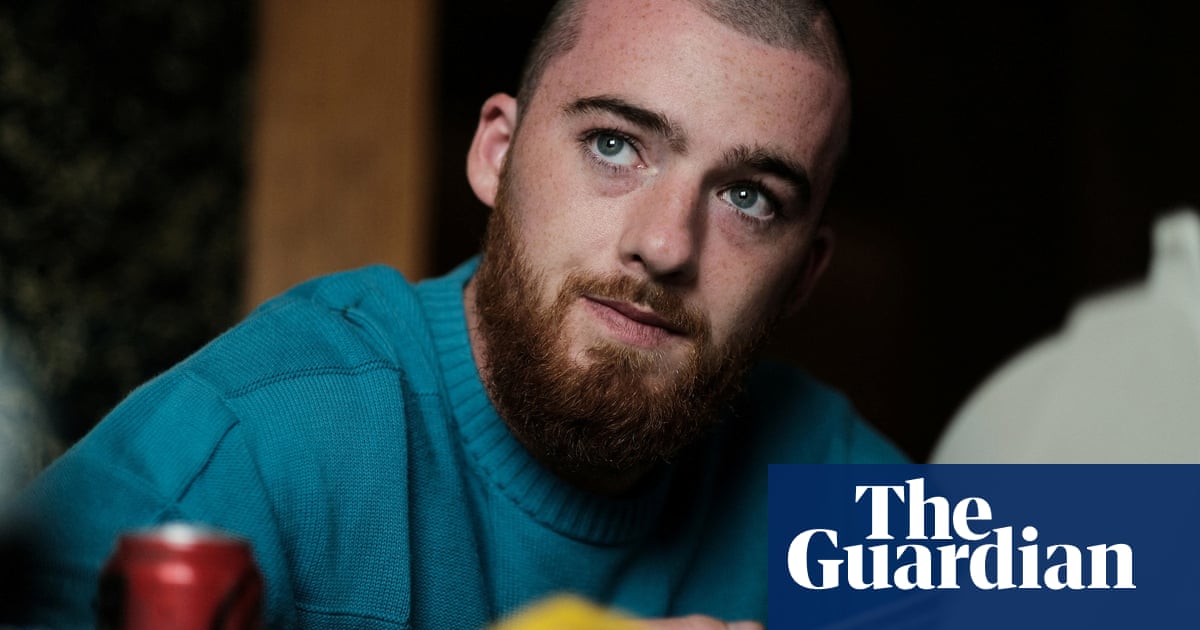
Filled with room-sized set-piece sculptures and installations, and with artworks so seemingly ephemeral, incidental and accidental – soiled handkerchiefs, piles of rust, a dented teapot – we would barely know what we were looking at unless Cornelia Parker told us. A survey of her 40-year career is full of delights and bomb damage, delicacy and violences, wry political comments and commemorations. It is also an art of collaborations – not least in a giant embroidery of the Wikipedia entry on the Magna Carta, whose lettering has been sewn by prisoners and professional embroiderers, Edward Snowden, Julian Assange and former Guardian editor Alan Rusbridger among them.
There are black-and-white photographs of clouds above London’s Imperial War Museum, shot with a camera that once belonged to Auschwitz commandant and amateur snapper Rudolf Höss. Rorschach-blot drawings made from ink derived from snake venom and its antidote, and further blot drawings made from porno-tapes confiscated by HM Revenue & Customs, cut up and turned into pigment. The things you see in the photos and the blots depend entirely on what the artist tells us, and what you expect to find there. The clouds (shot with infra-red film) look creepy and lowering. The blots, by turns, reveal snakeskin textures and intimate body parts. The associations are everything.
Parker’s art is all a kind of performance, and of teasing out poetry from the world about us. Like Marcel Duchamp and the great Catalan object-poet and playwright Joan Brossa, Parker makes art that can almost exist as rumour as much as it does as objects to be conserved and displayed. She’s a sort of alchemist, turning rust from a gun or a pile of incinerated cocaine, the teapot dented and mangled from its fall from the White Cliffs of Dover, the linings that once backed the canvases of JMW Turner, into something more than residue. Sometimes this residue is literal – handkerchiefs stained with the tarnish of various silver relics – from Guy Fawkes’s lantern to Horatio Nelson’s candlestick, from Henry VIII’s suit of armour to Dickens’ teaspoon. These smudgy cloths are nothing much in themselves, till you know how they came to be.
Parker’s own little wall labels are models of their kind – succinct, funny, and illuminating, describing her works as a matter of circumstances. Her short texts are almost works in their own right, and one begins to wonder whether we actually need the objects themselves, but somehow we do. Here’s a doll of Charles Dickens’ Oliver Twist, cut in half by the guillotine that chopped off Marie Antoinette’s head. This conflation of two very different symbols in the public imagination (one fictional, one real) has real edge. No wonder poor Oliver has such a look of surprise and frozen horror on his face. Another work conflates the Shroud of Turin and the grisly death of King Edward II, disembowelled with a red-hot poker.
Parker’s art is filled with shadows and traces, thoughts and objects, often suspended both in space and in the gap between the idea and its arrival. Where do ideas come from, I kept asking myself? Do you go looking for them or do they find you? Verso – a small, modest series of what appear to be slightly wonky abstract line drawings – are simply photographs of the backs of cards to which buttons have been sewn, in order to display them in haberdashery shops. The important thing is that Parker noticed these cards and paid attention to them, like an analyst picking up on what someone in therapy inadvertently let slip.
In many of her larger sculptural works there is much more of a sense of contrivance. This is particularly evident in a new sculpture, Island, which presents us with a greenhouse (reminiscent of the whitewashed greenhouses Parker’s parents had on their smallholding in Cheshire) whose glass panes are covered in small vertical chalk marks (the chalk, again, coming from the Dover cliffs), like the marks prisoners make on cell walls to count the days. With a floor of 19th-century Pugin/Minton tiles reclaimed from building works in the Palace of Westminster, the whole ensemble is illuminated by a bare lightbulb, casting shadows around the walls and ceilings of the room where Island is installed.
It all feels a bit forced, and relying on gambits she’s used before – the garden shed she once had blown up by the army, whose splintered, burned structure and its bombed contents are suspended around a single lightbulb, and the brass-band musical instruments – from a pocket trumpet to a gigantic sousaphone – all flattened by an industrial press and hung vertically in a circle, and her 30 Pieces of Silver, with its boot-sale collection of small silver-plate objects – tableware, picture frames, cigarette cases, souvenir gewgaws and what-have-you – all flattened by a steamroller then grouped and suspended just off the floor, like a silvery lily pond, in the work that opens the show.
In contrast to these crowd-pleasing spectacles, Parker’s 2018 film Thatcher’s Finger is a matter purely of looking. A spotlight tracks around a statue of Margaret Thatcher that stands in the Houses of Parliament in Westminster. The light casts the elongated and enlarged shadow of the ex-prime minister’s arm and pointing finger on the walls about it. No commentary is needed. Recalling expressionist cinema, Thatcher is recast as the haunting shadow of the vampire in Murnau’s 1922 silent film Nosferatu.
How rich and full of inexplicable meanings and associations the world is, her art says. There’s an unsettling magic to Parker’s art, and she teaches us to be alert.
Cornelia Parker is at Tate Britain, London, from 19 May to 16 October.












